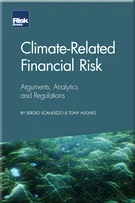Decision trees
Decision trees
Preface
Introduction: human-machine entanglement
Machine learning: origins
Useful tools
Decision trees
Introduction to neural networks
Back-propagation
Regularisation
Optimisation
Building neural networks
Early applications of machine learning
Interpreting neural network decisions
Predicting corporate bond returns
Deep learning networks
Applications of deep learning networks
Machine intelligence
Consciousness
The future and its challenges
Artificial intelligence and the military
Final thoughts
Appendix
Epilogue
Acknowledgements
Decision trees are popular supervised learning algorithms that can handle classification and regression problems. Decision trees break down a data set into smaller subsets by using if–then–else decision rules within the features of the data. The general idea of a decision tree is that each of the input features is evaluated by the algorithm and used to split the tree based on the ability of the split to explain the target variable. The features could be categorical or continuous variables.
An example of a tree, illustrating the nodes, appears in Figure 4.1. The tree is composed of a root node, decision nodes and leaf nodes. The root node is the topmost decision on the tree and is the first time the tree is split based on the best predictor of the data set. The decision nodes are intermediate steps in the construction of the tree. They are used to split the tree based on different values of the input features of the model. The leaf nodes represent the end points of the tree and hold the prediction of the model. As described below, in constructing the tree, the most important features are selected by the algorithm in a top-down approach, creating the decision nodes and branches of the
Copyright Infopro Digital Limited. All rights reserved.
As outlined in our terms and conditions, https://www.infopro-digital.com/terms-and-conditions/subscriptions/ (point 2.4), printing is limited to a single copy.
If you would like to purchase additional rights please email info@risk.net
Copyright Infopro Digital Limited. All rights reserved.
You may share this content using our article tools. As outlined in our terms and conditions, https://www.infopro-digital.com/terms-and-conditions/subscriptions/ (clause 2.4), an Authorised User may only make one copy of the materials for their own personal use. You must also comply with the restrictions in clause 2.5.
If you would like to purchase additional rights please email info@risk.net










